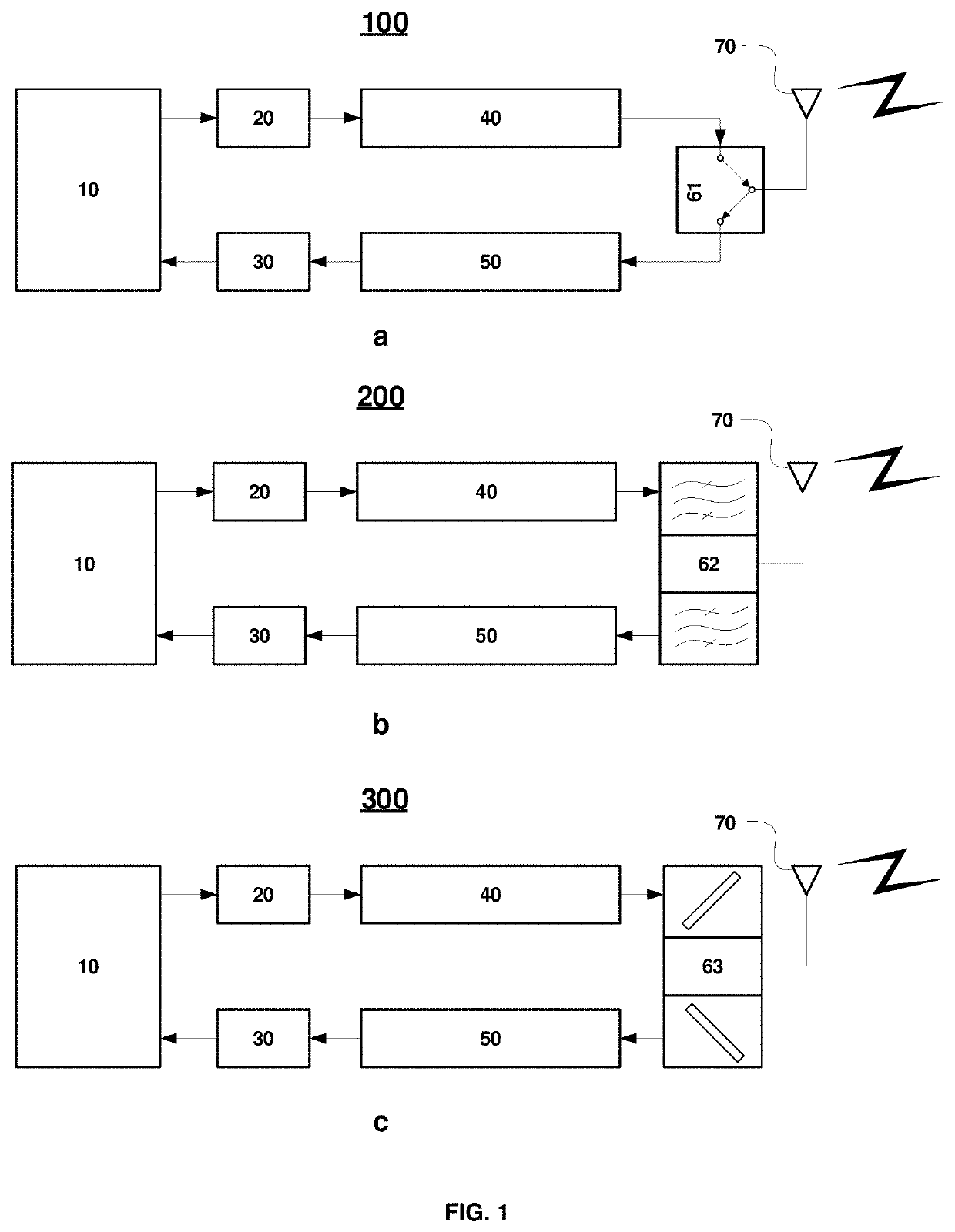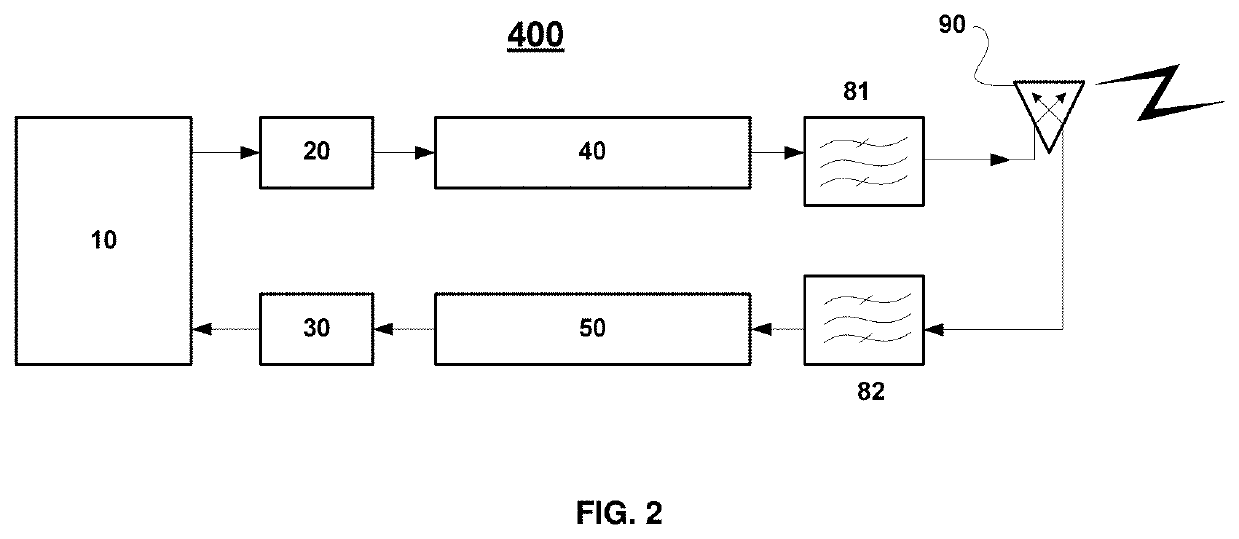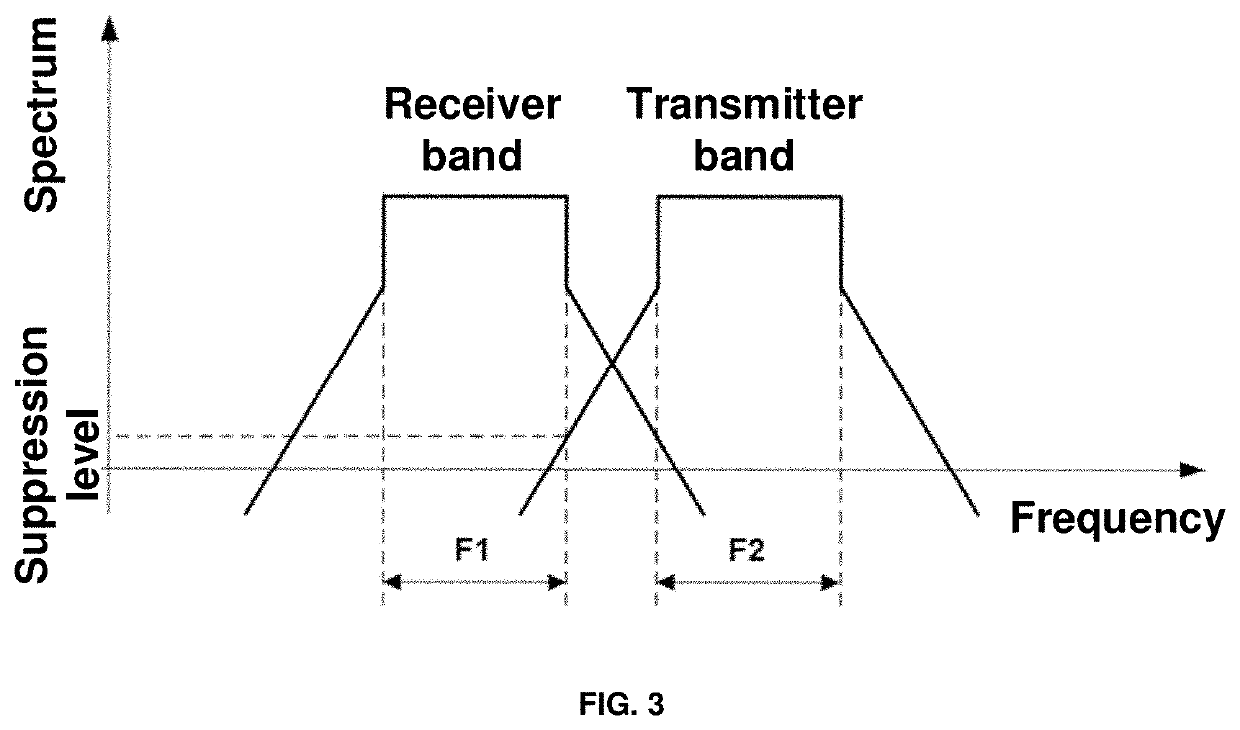Wireless communication apparatus with combined frequency and polarization diversity between transmitter and receiver channels
a communication apparatus and combined technology, applied in the field of millimeterwave communication apparatus, can solve the problems of reducing the size of the system, affecting the operation of the system, so as to reduce the loss of insertion
- Summary
- Abstract
- Description
- Claims
- Application Information
AI Technical Summary
Benefits of technology
Problems solved by technology
Method used
Image
Examples
Embodiment Construction
[0052]The present invention can be completely understood from the following description of some specific embodiments of the wireless communication apparatus with combined frequency and polarization diversity between the transmitter and receiver channels on the examples of the apparatus implementation in the millimeter-wave point-to-point communication systems with high data throughput.
[0053]The wireless communication apparatus according to the disclosed invention provides required isolation level between the transmitter and receiver with reduced insertion loss and also with less labor and resources expenses for manufacturing and assembling of the millimeter-wave transceiving device.
[0054]FIG. 1. shows block diagrams of the known from the background art communication apparatuses that implement various approaches for the diversity of the transmitted and the received signals. The device (100) that is shown in FIG. 1(a), uses the time-division diversity scheme (duplexing). It consists o...
PUM
 Login to View More
Login to View More Abstract
Description
Claims
Application Information
 Login to View More
Login to View More - R&D
- Intellectual Property
- Life Sciences
- Materials
- Tech Scout
- Unparalleled Data Quality
- Higher Quality Content
- 60% Fewer Hallucinations
Browse by: Latest US Patents, China's latest patents, Technical Efficacy Thesaurus, Application Domain, Technology Topic, Popular Technical Reports.
© 2025 PatSnap. All rights reserved.Legal|Privacy policy|Modern Slavery Act Transparency Statement|Sitemap|About US| Contact US: help@patsnap.com



